If you use a tonometer in your everyday work, you’re likely all too familiar with the common hiccups that can occur. We’ve all been there, haven’t we? Maybe the device isn’t calibrating correctly or that IOP reading seems suspiciously high every time. These are all too common issues that frustrate both seasoned veterans and newbie optometrists alike. But don’t fret! We’re here to shed some light on the most common problems you might encounter with your tonometer, providing some simple steps to fix them.
As much as we’d love to take away all your struggles, remember that not all troubleshooting procedures can cover all the potential issues. However, we’ve compiled an invaluable guide that might turn out to be your tonometer’s first aid kit. Get ready to piece together those puzzling tonometer issues and bring clarity back to your eye test appointments.
Remember, fixing technical issues yourself can sometimes save not only a service call but also precious time during a busy day. Knowing how to troubleshoot can turn a stressful experience into a rewarding one.
The first step when troubleshooting common issues with tonometers is to recognize the signs that your device may need service. Some indications might include inaccurate readings, a drift in the calibration setting, or a device that merely ceases to function properly. The aim of the troubleshooting process is to restore your tonometer to optimal working condition so as to derive accurate intraocular pressure measurements.
One typical issue that often occurs with tonometers is calibration error. This error typically develops within the range of 1.5 – 3.25 mmHg, if the tonometer is not checked within 3 months of purchase. Calibration errors might lead to incorrect intraocular pressure readings, which is particularly concerning in a clinical setting. Therefore, it is crucial that your tonometer is correctly calibrated, and this check should be a part of your equipment’s regular maintenance routine.
However, simply re-calibrating your tonometer won’t always solve the problem indefinitely. If the underlying issue causing the initial drift in calibration is not addressed, the tonometer may require re-calibration repeatedly. It’s essential to identify and rectify these root issues, to prevent the tonometer from falling out of the acceptable margin of error specified by the OEM manufacturer at 0.5 mmHg.
With daily checks, you can detect calibration errors early, allowing timely troubleshooting of your tonometer. Test your tonometer for calibration errors at the start of the day, running checks at 0, 2 and 6 sequences. If your tonometer fails to test accurately at 0.5 mmHg at any of these sequences, it requires a full service.
Last but not least, it is always recommended to follow all prescribed procedures for ensuring tonometer accuracy. This simple step can mitigate common issues, extend the lifespan of your equipment, and ensure the reliability of your measurements.
Imagine sailing through rough seas without a functional compass, or preparing a five-course meal without the right measurements. That’s exactly how it feels administering eye care without a properly calibrated tonometer. It’s an essential instrument to measure intraocular pressure, and its precision can be compromised if not checked regularly for calibration errors.
Now, you might ask, how often should I check the tonometer? As per studies, tonometers may develop calibration errors in the range of 1.5-3.25 mmHg if they’re not evaluated within three months of purchase. Such variances might seem inconsequential at first but have potential implications on a patient’s eye health and can interfere with accurate intraocular pressure monitoring.
Your tonometer manufacturer will provide an acceptable margin of error upon purchase. Typically, an OEM would recommend a calibration error within 0.05 mmHg for tonometers. If your tonometer exceeds this limit, or you’re unsure of its accuracy, it’s advisable to get it calibrated, or rather re-calibrated immediately by the OEM manufacturer. This is crucial to maintain the integrity and reliability of intraocular pressure readings, which in turn underlines the efficiency of eye care you provide.
One type of tonometer— the Goldmann Applanation Tonometer, not only requires regular checking and calibration but also demands disinfection for its precise functioning. Without these crucial steps, the accurateness of intraocular pressure monitoring could be compromised, risking proper diagnosis and efficient eye care.
Remember, as a medical professional, your foremost responsibility is towards your patients, and that includes using reliable, accurate instruments. Therefore, the routine maintenance and calibration check of your tonometer should be etched on your to-do list and carried out without fail.
Regular maintenance and calibration checks play a vital role in preserving the accuracy and reliability of your Goldmann applanation tonometer. Designed to measure intraocular pressure, these devices are invaluable in providing effective eye care for patients. And yet, the importance of proper calibration is often erroneously sidestepped.
Maintaining your tonometer’s calibration ensures its efficacy in measuring precise intraocular pressure. Being such a vital part of patient care, it’s your responsibility to ensure its accuracy isn’t compromised in any way. Case in point, a study found that tonometers can develop calibration errors in the range of 1.5-3.25 mmHg if not checked within 3 months of purchase.
Rarely addressed but exceedingly crucial, Calibration Error Checking aids in guaranteeing the correct operation of tonometers in clinical settings. This process ideally involves daily calibration error checks using a Calibration Bar at 0, 2 &left; 6. If your tonometer is not within the acceptable margin of error specified by the OEM manufacturer (at 0.5 mmHg), it’s obvious you need a recalibration.
While routine calibration is vital, a full-service approach to tonometer maintenance is equally important. Opting for a full-service is advantageous as it addresses underlying issues that may influence the reliability and accuracy of the device in the long term.
Let’s break it down into a step-by-step approach for when your tonometer requires servicing:
Remember, a well-maintained tonometer is essential to effective eye care for patients. The cost and effort involved in servicing are investments towards accurate and reliable reading, crucial for quality patient treatment.
When it comes to maintaining the reliability and longevity of your tonometer, full-service maintenance can’t be overstressed. This routine check-up does more than just address surface issues. It dives deep into the mechanics of the equipment, making certain that each component is working as it should for long-term reliability and accuracy.
A common issue that necessitates sending a tonomometer out for full service is when it fails to meet the recommended 0.5 mmHg at any sequence (0, 2 & 6). Full-service maintenance is also recommended if the tonometer results deviate outside the accepted margin of error, set by the OEM manufacturer at 0.5 mmHg. These red flags suggest a potential calibration error that could compromise accuracy during intraocular pressure measurements and thus, impede effective eye care for your patients.
So, how do you know when your tonometer requires servicing? There are a few crucial signs to watch out for. If the device is consistently giving readings that seem out of the ordinary, or if it doesn’t function as smoothly as it once did, then it could be time for a full-service maintenance check. Moreover, routine calibration error checking is essential to ensure proper functioning of your equipment within a clinical setting.
Despite the key role of routine calibration and maintenance, it is often, unfortunately, overlooked. To keep your instrument in top working condition, be sure to incorporate these maintenance checks into your schedule. It’s not just about keeping the machine functional; it’s all about guaranteeing the best possible eye care for your patients.
Goldmann type applanation tonometers require routine maintenance and calibration checks to function accurately.
Q: How frequently should I check for calibration errors in my tonometer?
A: The frequency of calibration error checks can vary, depending on the specific brand and model of your tonometer, as well as its usage levels. However, it is advisable to have a regular calibration schedule. Commonly, frequencies range from daily to annually. Keeping an eye on your device’s calibration can help ensure it remains accurate and reliable in its measurements.
Q: Is a service contract necessary for maintaining my tonometer?
A: While a service contract may initially seem like an extra expense, it provides peace of mind by covering key maintenance tasks, including function tests to check calibration. Before signing up, it’s advisable to enquire about what exactly is covered in the contract. Even with a service contract, regular checks and maintenance on your part are still crucial. Remember that the cost of a malfunctioning tonometer goes beyond just financial concerns—it can be in terms of patient care and accuracy of readings as well.
Q: Are there any troubleshooting tips I should be aware of?
A: Yes, there are several troubleshooting steps you can take if your tonometer is giving you issues. Feel free to consult our dedicated section on “Troubleshooting Steps for Tonometer Problems” for in-depth advice and solutions.
Q: Why is the maintenance of a tonometer so important?
A: Regular maintenance is essential for the accuracy and reliability of your tonometer. A well-maintained tonometer can provide accurate intraocular pressure readings, crucial in diagnosing and monitoring conditions like glaucoma. Also, regular care and maintenance of your tonometer can prolong its life and reliability, giving you better value for your investment.
Q: Are there different types of tonometers and do they require different care?
A: Yes, there are various types of tonometers, including Goldmann applanation tonometers, pneumotonometers, and non-contact (or air-puff) tonometers. Each may require slightly different care and maintenance processes. For specific instructions on how to care for your type of tonometer, it’s best to consult your device’s user manual or contact the manufacturer.
In conclusion, your tonometer, regardless if it’s a Goldmann applanation model or a handheld Tono-Pen or iCare, is an essential tool to diagnose and monitor intraocular pressure-related conditions. As with any critical instrument in ophthalmology, it requires regular and dedicated care. Maintenance, disinfection, and calibration are key steps to ensure your tonometer remains accurate and reliable. It’s worth noting that each tonometer type has its own unique needs for maintenance, and it’s vital to follow the manufacturer’s specific instructions. No matter what, you should always be prepared to address common problems and keep your device in prime working order. Your patients are counting on it.
VISIT OUR SHOP
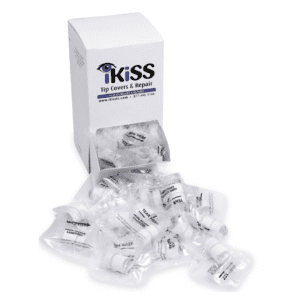
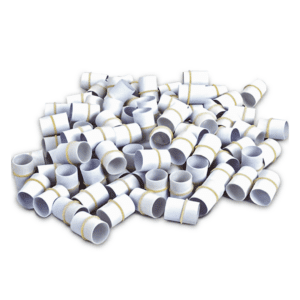
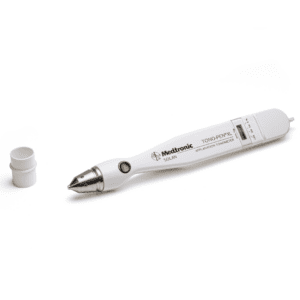
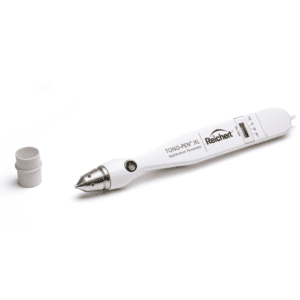
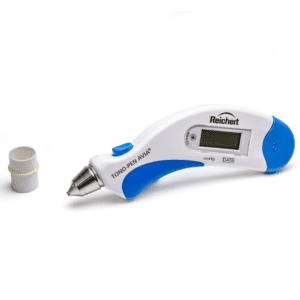
iKiSS is the go-to provider for top-quality refurbished Tono-Pen® Tonometers, Tono-Pen AVIA® Tonometers, Slit Lamps, and Phoropters, offering substantial savings of up to 40%.